MAKE magazine never fails to amaze. And this time, John Park tackles a DIY wind-powered generator—and he shows you how to do it! Before you start watching the video tutorial, make sure to download the PDF of this project for reference.
So you want to build this wind-powered generator? Great, but just know that this isn't going to help you be independent of energy providers. You'll still be on the electricity grid, but you'll be saving a decent chunk of money of your electricity bill.
To make the wind-powered generator, you'll need a motor from an old exercise treadmill and some pieces of PVC pipe (but that's not all—it's just the main materials needed). After building your own successfully, you'll be able to get a good 20 volts for a steady 15mph wind.
Just updated your iPhone? You'll find new emoji, enhanced security, podcast transcripts, Apple Cash virtual numbers, and other useful features. There are even new additions hidden within Safari. Find out what's new and changed on your iPhone with the iOS 17.4 update.



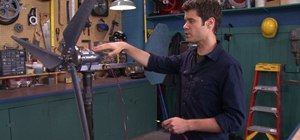
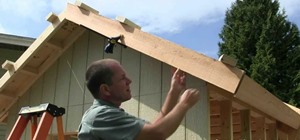


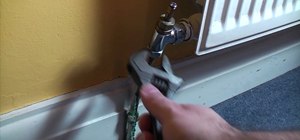


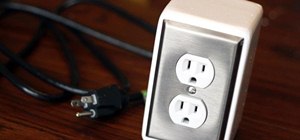
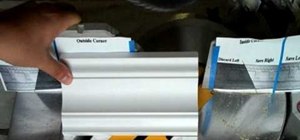

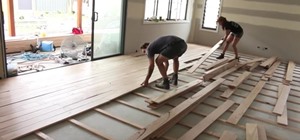

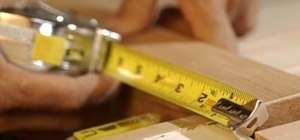

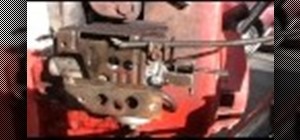


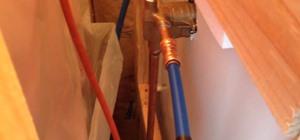


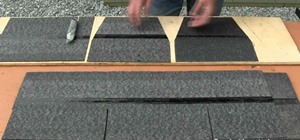
21 Comments
Are the wires eventually going to twist up around the pole? How is this dealt with in the old style farm windmills?
typically you'd have brushes on the pole in the pivot to combat that problem...
it's a nice, simple design, but i notice it's just a straight vane, instead of a furling system used.... if the wind blows too strongly, it'll burn out your generator...
now to check freecycle for unwanted treadmills :D
what kind of generator do you used .. how much cost . where you buy the generator
seems like any dc motor can do it im trying to fiqure out how do you connect the inverter to your house
Don't! Not with out using a special device that disconnects your power from the grid, don't do it. If there is a power outage, and a lineman is working on the lines, you could fry him, and for this reason, it is illegal everywhere I know of without the disconnect I mention. Use of a totally seperate system is acceptable... Done right.
how does the fan gather electricity?? i cant imagine the internal cycle of the wind mill how does it generate electricity? was it like the cigarette lighter the one u flick then sparks a tiny volt that can ride trough a wire?
No, it's not at all like a pezio crystal. It's "old fashioned' magnesium and coils of wire. There are two main ways this is done today, PM, or permant magnets, which will 'self excite', or produce without a battery connected, and alternators, which are often more efficient, but Do require an external source of power (battery) to begin making any juice. Altenators make, as the name implies, alternating current, aka, AC voltage, which is then typically rectified by a diode pack, in most cars, a set of 6, 3 pairs, as they are three phase devices, so one set per phase. A generator, on the other hand, already produces DC, Direct current, and in this video, the bridge was used to block battery voltage from going back into the generator and making it a fan. Try this: Get a length of wire, longer is better, and one or more powerful magnets. (A dead hard drive will yield one or two very nice ones, and every microwave oven has a pair of donut shaped ceramic magnets in the magnetron tube) Also get a sensitive, VERY sensitive galvanometer, aka, voltmeter. Connect up both ends of your wire to the voltmeter. With magnet laying on or very near wire, nothing will happen. Now, move the magnet very quickly over the wire, watching the meter. You should see quick little spikes of voltage as you move the magnet over the wire. Faster is better, and with every change of direction, polarity will also change. Going the length of the wire will have little effect, going across it will have more. What you are doing is to 'cut' the field lines of magnetic force by moving the field of magnetic force over the wire. You could just as easily do it the other way, moving wire over stationary wire. Which is what we are doing in this project, the magnets stay still, are mounted in the motor housing just under the metal jacket, glued in a complete ring, and the coils of wire are being turned. As 'slip ring' system, with 'brushes' make contact to bring electricity out, or in, depending if we are using it
What is the minimum wind level to generate whatever kind of level power?
how do you connect the bridge rectifier?
The bridge will be markes as to AC in, and Positive and Negative out, although the generator is already DC, we are just using it here as a 'blocking' diode, to prevent the battery from discharging back through the generator by making a fan out of it. A single diode could also do the same job. A word about ratings: My first treadmill motor was capable of over 100 volts DC, at considerable amperage. (When connected to a gasoline powered engine) Any diode, or bridge, (4 diodes in a package) must be able to withstand at least the greatest PIV, Peak Inverse Voltage (reversed polarity, or 'backwards', blocked, voltage) to be seen by the system, AND, be able to safely carry ALL the current generated, without overheating. In the video, we see the bridge attached to the boom, made of Aluminum, a good heat sink. For this reason, a bridge makes good sense, as they are often designed with heat sink mounting in mind. A good rule of thumb is to double the ratings one might expect, so, if I can get 100 volts out of my motor/generator, at say, 15 amps, I want a bridge that has a PIV of at least 200, and a amp (current) rating of at least 30 amps. A good, cheap source of bridges is any old computer power supply you don't mind salvaging. many have bridges that can go to 200 PIV, but not at 30 A! You CAN gang up bridges... but it can be tricky, as one or more diodes will always "hog" more current, and therefore fail, leading to further failures in the rest. One way, is to not parallel them, but series, heave amp bridges of lower PIV, the DIFFERENCE 'seen' from one bridge to the next is then what you need to pay attention to. Automotive battery charger bridges, like Radio Shack sells only have a PIV of about 50, but can go to 25 to 35 amps ea. If strung together, 4 of them would give you the 200 PIV at the 25 or 35 amps, whichever is the lowest one in string. A single, heavy duty industrial diode, stud type, can also be had, and do the same job
Stud rectifiers can be mounted on heat si
How can I buy Ametek 30 VDC or Indiana Gen 24 VDC generators in South Africa?
you can find ametetk motors on ebay but they are verry rare so you might not come across them that often
How's it free energy when you drove the turbine round in the back of your truck? You gotta pay for gas, don't you?
Typically a wind turbine is mounted on a pole or pylon in your garden, and is driven by the wind. In this particular example, since John Park wanted to demonstrate it working, it is easier to mount it on a truck bed for "testing" than it is to rely on sufficient wind at the time of filming. Typically a wind turbine (unless you have something working on lower rpm) require 10 m/s winds to generate electricity
nice idea, you can enter into taobao for it
good work
How would you attach the wind turbine to an electrical grid??? Also how do you decide what kinda of electric motor to use???
You need an extra piece of kit called a grid tie inverter. This serves two purposes, one is to change the voltage to the correct voltage for the grid, and the other is to act has a brake should the grid be taken down for maintenance. If the connection between the grid and the turbine were not severed, then there is a chance of frying whomever would be working on the lines. Typically, a wind turbine would be wired into a battery or two, to balance out the power being produced, so that you get a better flow to the grid.
As for electric motor, most home use turbines are rated around 12v, some are 24v, although wind intensity will ultimately determine output voltage. In the example above, most treadmills (as far as I know) use 12v dc motors. What you need to consider most is the wind speed in your area. You want a turbine that will run as much as possible. Most turbines require a 10m/s wind speed, which is about 22.5mph. You can get low rpm generators that require lower wind speeds, but in higher winds will use a furling system to turn it out of the wind at lower wind speeds than other turbines...
wind,water,& the sun. all the power we need.
Good video but to be honest, after reading the title I thought I was going to be learning how to make a wind-powered generator, not how to make a wind meal using a wind-powered generator. Not what I was looking for but still fun to watch.
That seems fairly easy without having to tear the motor apart! Thank you for the video.
Share Your Thoughts